Fix: Xbox One Controller not Recognizing Headset
Several users are reporting that they can’t make their Xbox One controller to recognize the headset. The issue is reported to occur with both wired and wireless headsets when the controller is connected to an Xbox One console or to a PC. In most cases, affected users report that the issue occurs with official Microsoft headsets or 3rd party headsets that are supposed to be compatible with Xbox One controllers.
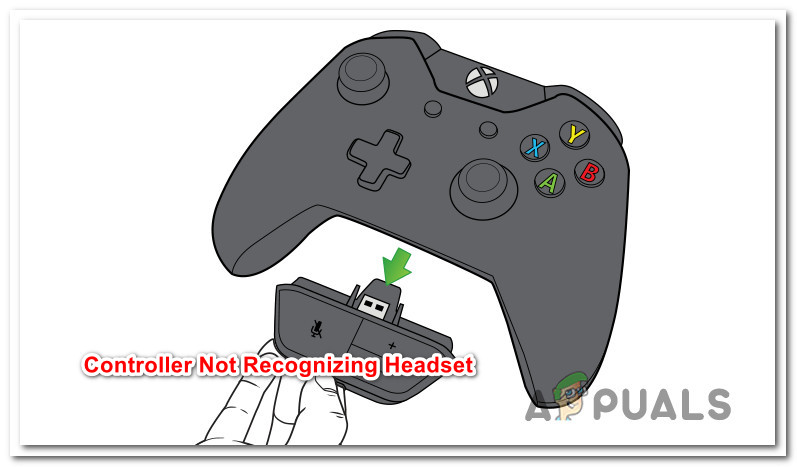
What is causing the Headset issues with the Xbox One Controller?
We investigated this particular issue by looking at various user reports and the repair strategies that are commonly deployed in this case to resolve the issue. Based on what we gathered, there are several potential culprits that might end up causing this particular issue:
- Faulty headphone socket in the controller – You might be encountering this issues if the headphone socket has come off the motherboard or there’s a problem with the headphone socket itself. In this case, the only way forward is to replace your Xbox One controller with a new one (or send the current one to warranty).
- Outdated Xbox One controller – In certain cases (especially if you’re using a 1st generation controller) you’ll need to update your controller’s firmware in order to be able to connect headsets to it. This can be done from the console itself or by using a Microsft app (Xbox Accessories) on a PC.
- The controller needs fresh batteries – This might seem like an unlikely culprit, but as batteries get weak, the controller is programmed to gradually disable battery-draining functions (such as audio and rumble) in order to conserve the remaining battery. In this case, you can resolve the issue by simply replacing the current controller batteries with fresh ones.
- 3.5-mm jack is not securely plugged in – This issue is more common than you might expect, mainly because the 3.5 mm jack has a tendency of feeling that it has been plugged in all the way even when it isn’t. If this scenario is applicable, you can resolve the issue by ensuring that the headset/headset adapter is securely plugged in.
- Faulty or incompatible headset – As you might expect, this particular issue can also be caused by a failing headset. Another potential issue is you might be trying to connect a headset that is not compatible with Xbox One controllers.
- Xbox One firmware glitch – A while ago, Microsoft quietly rolled up an update that broke the functionality of a lot of Xbox One supported headsets. Microsoft has since remedied the issue with a hotfix. If this scenario is applicable, you will be able to resolve the issue by updating your console’s firmware to the latest version.
If you’re searching for fixes that will get your headset to work with your Xbox One controller, this article will provide you with several troubleshooting guides. Down below, you’ll find a collection of methods that other users struggling to resolve the same issue have used to fix the problem indefinitely.
If you want to be as efficient as possible, we advise you to follow the methods in the order that they are presented in. One of them is bound to resolve the issue in your particular scenario.
Method 1: Update the Xbox One Controller
It’s mandatory to ensure that your controller is updated to the latest software. This way, you’ll ensure that you get full use out of your Xbox One Stereo Headset adapter capabilities. Several affected users have reported that the issue was resolved and they managed to connect the headset successfully after they updated their Xbox One Controller.
The steps of updating the controller’s software will be different depending on the device that you’re using. We have created two separate guides that will accommodate every possible scenario.
If you are encountering the issue with a controller connected to an Xbox One Console, follow the first guide. If you encounter the issue while the controller is connected to a PC, follow the second set of steps.
Updating the controller using the Xbox One console
Although you can also update the controller wirelessly, doing it via USB is known to be a lot more reliable. Follow the steps below to update via USB:
- Turn on your console, sign in with your Xbox Live account and ensure that the latest system update is installed. To do this, go to System > Settings > System > Updates & downloads. Then, go to the Updates tab and select Update available. Then, follow the on-screen prompts to update your console to the latest version.
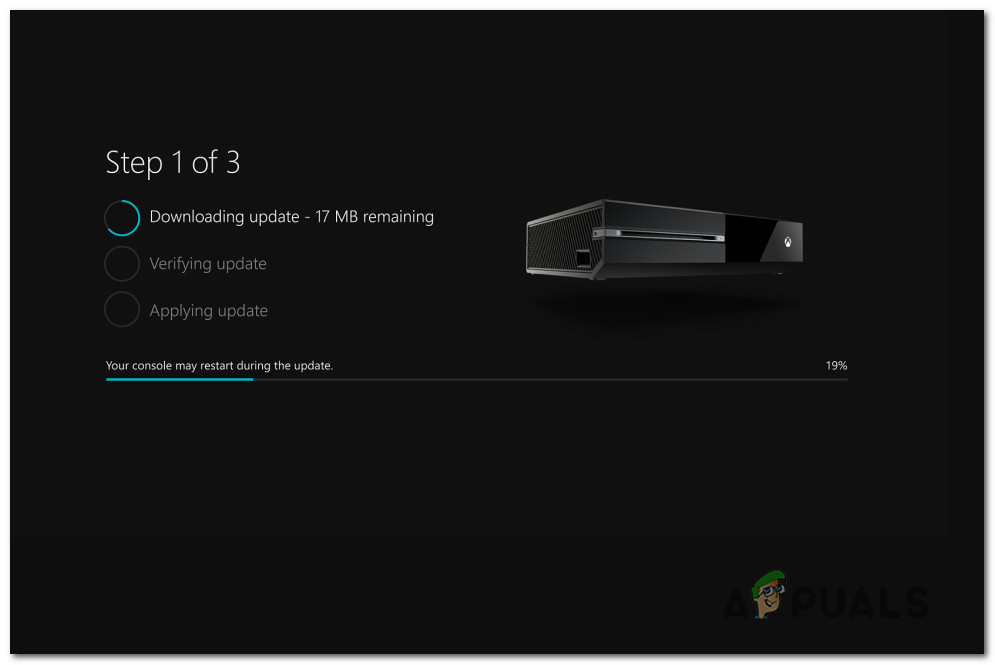
Updating console firmware to the latest - Once your console firmware is updated to the latest, plug the stereo headset adapter into the bottom of your controller.
- Connect your controller to a USB cable and plug it into the USB port on the left side of the console.
- The instructions for the controller update should appear automatically after a few seconds.
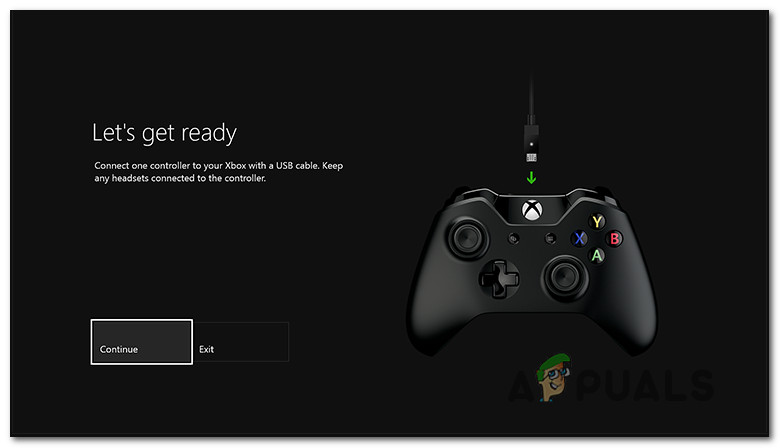
Controller updating menu Note: If the instructions don’t appear automatically, go to System > Kinect & devices > Devices & accessories and select the controller that you want to update. Then, select Device Info > Firmware version and choose Continue.
- Follow the on-screen instructions to complete the update. When the process is complete, unplug the USB cable, restart your console and see if the headset is now connected successfully.
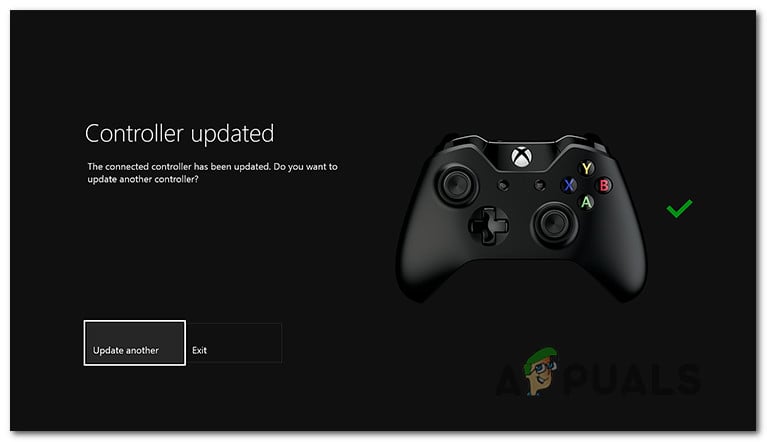
Updated Xbox One Controller example
If you still have the same issue, move down to the next method below.
Updating the controller using a PC
If you’re encountering the issue when the Xbox One Controller is connected to a PC and you don’t have the means to update it via a console, you can also do via the Xbox Accessories app. Here’s what you need to do:
- Press Windows key + R to open up a Run dialog box. Then, type “ms-windows-store://home” and hit Enter to open up the Microsoft Store.
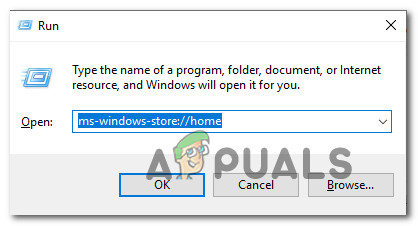
Opening the Microsoft Store - Inside the Microsoft store, use the search function in the top-right corner of the screen to search for “Xbox Accessories“. Once you arrive at the correct listing, click on Get to download the application on your computer.

Downloading the Xbox Accessories app - Once the application has been downloaded and installed, launch it and connect your Xbox One controller (by using a USB cable or an Xbox Wireless Adapter.
Note: Keep in mind that if you haven’t yet updated your operating system to the Anniversary Edition update, you’ll be prompted to do so. - When the pairing process is finished and your computer is connected, you’ll be prompted with a message saying that an update is required. When you see the prompt, follow the on-screen instructions to install the update.
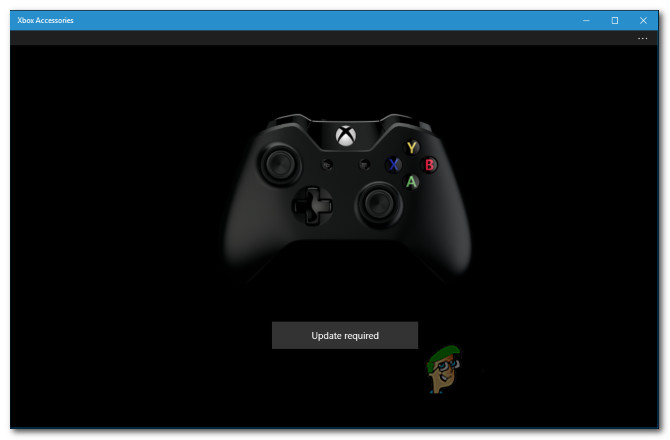
Updating the controller via Xbox Accessories - Once the process is finished, restart your computer and see if the issue has been resolved at the next startup.
If you’re still encountering the same problem, move down to the next method below.
Method 2: Use fresh batteries for the controller
Another potential culprit that might seem harmless is your controller batteries. We’ve seen this problem occurring with Xbox 360 controllers as well. As batteries get weak, some controller functions such as audio and rumble are turned off to conserve the remaining power.
If this scenario is applicable to your situation, chances are your headset is unable to connect because the audio function is disabled. This is even more likely if you’re trying to use a wired connection.
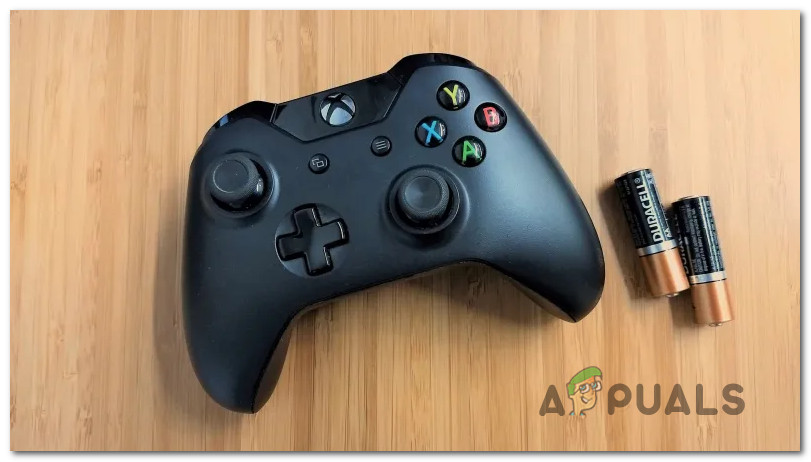
Just troubleshoot this potential cause from our culprit list, try replacing your controller batteries with fresh ones and see if the issue is still occurring.
If you’re still having the same problem, move down to the next method below.
Method 3: Make sure that Stereo Headset 3.5-mm is securely plugged in
As some affected users have reported, this particular issue can also occur if you’re using a headset adapter that is not firmly plugged into your controller or if the Stereo headset 3.5 cable is not securely plugged into the headset adapter.
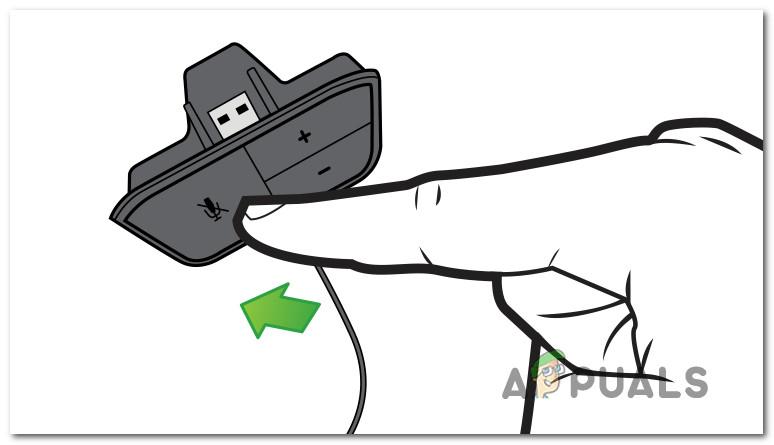
You can test if the necessary ports are plugged properly by pressing the mute button once. If the LED lights up ass soon as you press the Mute button, the connection is working as intended.
If you’ve tested this theory and it turns out that the headset adapter is correctly connected to your controller, move down to the next method below.
Method 4: Verifying Headset & controller
Other potential causes that will end up producing this issue are a faulty Headset or a faulty Xbox One controller. Fortunately, there are some easy troubleshooting steps that will let you know if one of your accessories is responsible for the issue.
With this in mind, start by plugging your Headset Adapter into a different device (a laptop, PC, smartphone) and see if it’s working. If it is, it’s very likely that you’re dealing with a faulty controller. In case the headset is not working on a different device, it’s likely that you’ll need to replace your headset.
If you have a second controller, you can also try to connect your headset to it and see if the headset is still not working.
If these verifications haven’t pointed out towards a headset or controller fault, move down to the next method below.
Method 5: Performing a power Cycle on the Xbox One
As some users have reported, there’s a chance that you might be able to resolve the issue by performing a full power cycle on your Xbox One console (regardless of which version you’re using).
This method will be effective if your issue is caused by an Xbox dashboard glitch. Although if you’ve updated your console firmware version to the latest version, you should no longer be encountering this issue.
But if you’re still dealing with the same issue, here’s a quick guide on how you can physically power cycle your Xbox One console:
- Press and hold the Xbox One power button (on the front of the console) for 10 seconds or more. Preferably, you should keep holding on the power button until the LED goes off.
- Wait a minutes or so before turning your console back on by pressing the Xbox button on the console again.
- If you see the Xbox One green boot up animation, it means that the procedure has been successful.

Xbox One starting animation - In the event that your Xbox One enters directly into the dashboard (without any animation), repeat the process above as the procedure has not been successful.
- Once the startup is complete, try connecting your headset and see if the issue has been resolved.
If you’re still having the same issue, move down to the next method below.
Method 6: Performing a factory reset
If you’ve come this far without a result, there’s a high chance that the issue might actually be caused by a problem with your console’s OS firmware. In this case, affected users have reported that doing a soft factory reset has the highest chance of resolving the headset issue.
A Soft factory reset will refresh all OS components while keeping your games and applications data intact. Here’s a quick guide on doing a Factory Reset:
- Open your Xbox console and press the Xbox button to open the guide menu.
- From the guide menu, navigate to System > Settings > System > Console info.
- From the Console info tab, select Reset console.

Performing a soft factory reset - From the Reset your console menu, choose Reset and keep my games & apps.

Soft resetting console - Wait for the process is complete, then see if the issue has been resolved.





